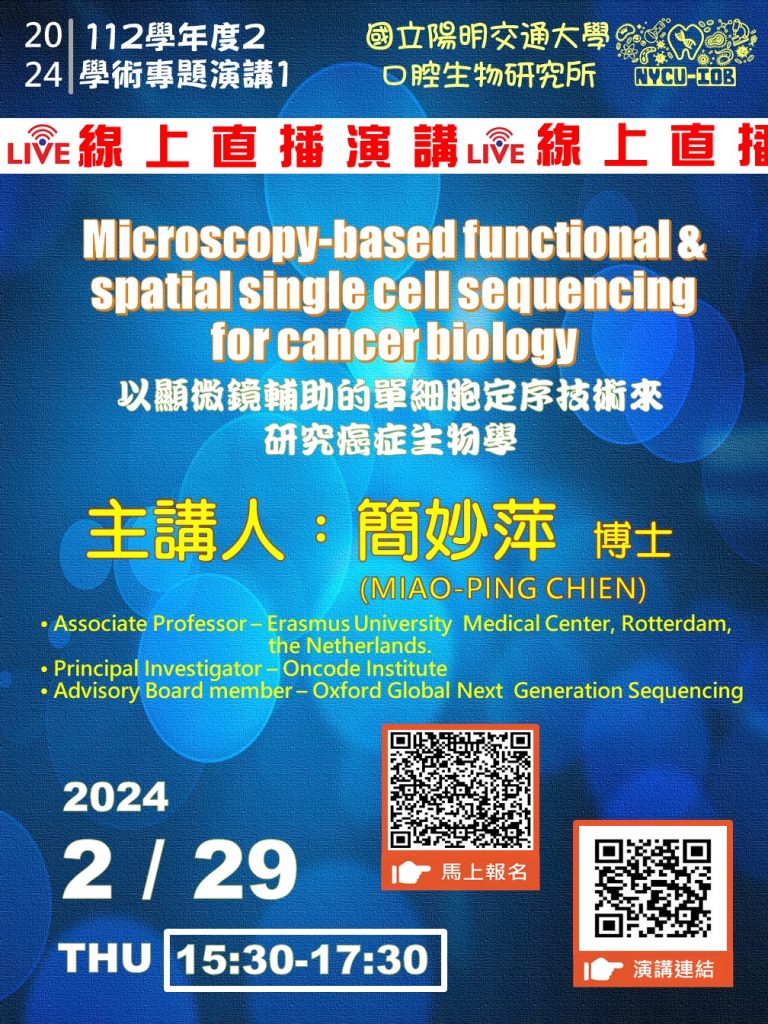【演講】113/2/29 Erasmus University Medical Center, Rotterdam簡妙萍博士:Microscopy-based functional & spatial single cell sequencing for cancer biology
- 2024 年 2 月 15 日
- 發佈者 nycuiob
- 分類 演講/活動

國立陽明交通大學口腔生物研究所112學年度第2學期學術專題演講第1場(線上演講)
◎時間:113年2月29日(星期四)下午15:30-17:30
◎地點:線上演講
◎報名連結
◎視訊連結:https://meet.google.com/pui-izwh-uwz
◎講題:以顯微鏡輔助的單細胞定序技術來研究癌症生物學
Microscopy-based functional & spatial single cell sequencing for cancer biology
◎講者:簡妙萍博士(MIAO-PING CHIEN)
• Associate Professor – Erasmus University Medical Center, Rotterdam, the Netherlands.
• Principal Investigator – Oncode Institute
• Advisory Board member – Oxford Global Next Generation Sequencing)
◎摘要:Tumors are composed of heterogeneous subpopulations of cancer cells. Single-cell technology is suitable for tackling tumor heterogeneities; however, the state-of-the-art methods cannot directly link the profiled genotypes, transcriptomes, or proteomes to tumorigenic phenotypes, such as metastasis or therapy resistance, hence hindering our understanding of the underlying mechanisms. On the other hand, microscopy imaging can capture these aggressive, tumorigenic phenotypes; however, the scarcity of these aggressive cancer cells makes it difficult to identify them using commercial microscopes. To address these aforementioned challenges, our lab has developed microscopy/image-based functional single-cell sequencing (FUNseq), which allows genomic, transcriptomic, and proteomic profiling of single cells of interest based on microscopically observed functional characteristics.
In the talk, I will introduce the FUNseq technology and how we can apply it to profile subpopulations of cancer cells displaying different phenotypes of interest (aggressive migration, abnormal radiation-induced DNA damage response, and irregular cell mitosis), thus linking genotypes to phenotypes. I will also discuss how FUNseq can be applied to identify otherwise missed gene targets and biomarkers. We have validated a set of FUNseq-identified predictive signatures of metastasis in head and neck squamous cell carcinoma using patient cohorts. We have also expanded the technology to enable spatial profiling of (tumor) cells with deep single-cell RNA sequencing and single-cell resolution. I will discuss how we implemented this method to profile different spatially patterned cancer and immune cells within tumor tissue slices.

